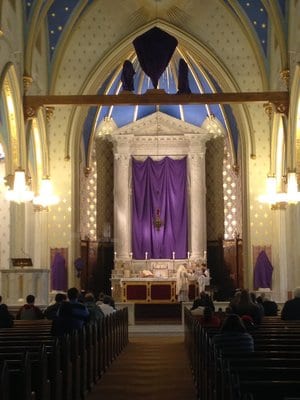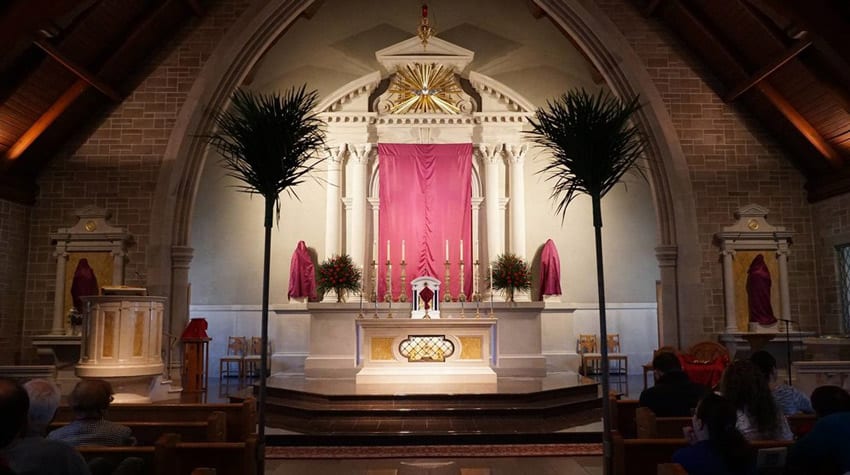Passiontide: The Purpose for Veiling Sacred Images
In the Catholic tradition, Passiontide calls for a heightened awareness of the Lenten sacrifice by covering the crucifixes, artwork, statues and other beautiful reflections of the faith throughout the church. This time is a visual reminder of many important elements regarding Christ’s ultimate sacrifice for humanity. Although not a universal practice, Passiontide falls during the last two weeks of Lent and the images are covered in strict preparation for the Triduum, which consists of three days: Holy Thursday, Good Friday and Easter Vigil.
Artwork, statues and crucifixes are beautiful representations of Catholicism. Similarly, the veiling of these images during Passiontide symbolizes the darkness without faith. Without the invisible made visible, the Incarnation and Christ’s Life, Passion, Death and Resurrection, there would be no saints, no Mass, no Christmas, no Easter, no feasts or celebrations. By shrouding the sacred images for these couple weeks before Easter, we are encouraged to imagine the bleakness of a world without Christ’s Sacrifice on the Cross and focus on the great gift of Life the Passion bestowed on humanity.
At the Easter Vigil, the veils are removed and the sacred images revealed once again. New light and new life is brought into the church to inspire new hope. Like so many traditions, the veiling of the images represents a connection between the temporal and the eternal, life on earth, dim and clouded versus life in heaven with God and the saints, which is bright and glorious.


St. Mary Church, Norwalk, CT
Photo Credit: New Liturgical Movement


St. Catherine of Siena, Trumbull, CT Photo Credit: St. Catherine of Siena Parish
For more photos of Passiontide visit the New Liturgical Movement.
